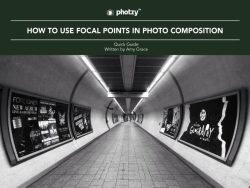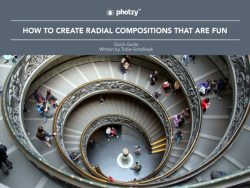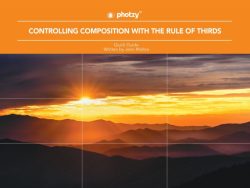4 Guides on Composition Rules to Try in Your Photography
When it comes to taking great photographs, we all know that composition is key. It’s the way in which a photographer arranges the elements within a frame to create balance, harmony, and visual interest.
In this article, we’ll show you three guides that cover compositional rules that will help you create stunning, eye-catching photographs: focal points, radial compositions, subject framing, and the Rule of Thirds. Regardless of your photography proficiency, it’s always good to revisit and touch up on these concepts to try out in your shots.
Ready to improve and enhance your photos? Let’s dive right in…
1. How To Use Focal Points in Photo Composition
Focal points are a crucial element of photography composition that help to draw the viewer’s eye to a specific part of the image. Without focal points, viewers can wind up confused about the intent or mood of a photograph.
Whether it’s a person’s face, a dramatic landscape, or an object of interest, focal points help to anchor the image and create a sense of focus and purpose.
earn how to use focal points in your compositions to create compelling, attention-grabbing images. Download now →
2. How To Create Radial Compositions That Are Fun
Are you at a point where you feel that your photography has reached a plateau – that you just don’t have fun anymore?
Well, here’s something that might inject some fun into your photos again! Radial compositions use lines, shapes, or elements that radiate out from a central point or focal point. This type of shot will not only spice up your compositional skills, but you can have a lot of fun with them to create a sense of movement, energy and draw your viewer’s eye around the frame and lead them to the subject of the photograph.
Check out how to create a dynamic, radial composition here. Download now →
3. Composition and Subject Framing
Framing in composition is the technique that involves using elements in the scene to frame the subject of the photograph and to draw attention to the main subject allowing for added depth and visual interest to the image. It can be done either in-camera or during post-processing.
Subject framing can be achieved through the use of natural or man-made elements. Subject framing helps to draw attention to the main subject of the photograph, and can add depth and visual interest to the image.
This guide covers the essentials of subject framing. Download now →
4. Controlling Composition With The Rule Of Thirds
As a refresher or in case you hadn’t encountered the Rule of Thirds yet, this Rule involves dividing the frame into nine equal parts, and placing the main subject or focal point along one of the lines, or at the intersection of two of the lines.
Good photographers make a lot of decisions about where various elements lie in the frame. This guide will explore one way of organizing the elements in your photograph using this compositional tool for well balanced photos. Download now →
Recommended Reading
If you liked the guides in this article and learn more about composition, definitely check out the Creative Composition Guided Resource Kit Vol 1 by Photzy. You get 17 pieces of curated content on creative composition, as well as a guided video walkthrough, 3 hands-on exercises and assignments to try. Get the Kit here!




